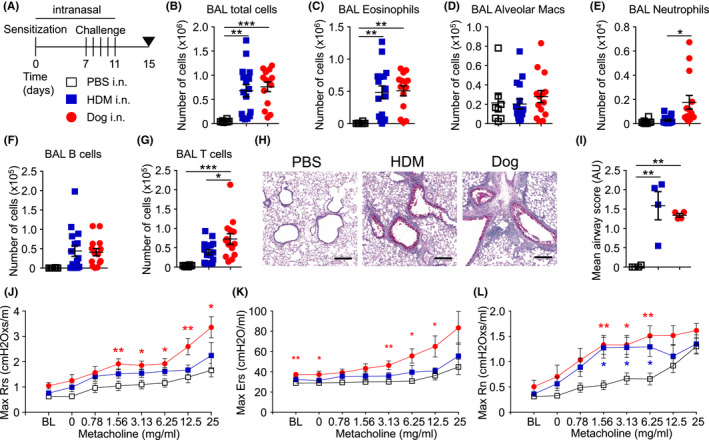FIGURE 1.

Intranasal administration of dog allergen extracts leads to airway inflammation and airway hyperresponsiveness. (A) Regimen of intranasal administration of PBS (open square), HDM (blue square) or dog allergen extracts (red circle). (B–G) PBS n = 8, HDM n = 16, dog allergen extracts n = 14. (B) Total number of cells in the BAL. (C) Number of eosinophils in the BAL. (D) Number of alveolar macrophages in the BAL. (E) Number of neutrophils in the BAL. (F) Number of B cells in the BAL. (G) Number of T cells in the BAL. (H) Periodic acid‐Schiff‐diastase staining of lung sections (line = 200 μm). (I) Mean airway score of lung sections (n = 4 per group). (J–L) Airway resistance to increasing doses of methacholine as measured by FlexiVent (PBS n = 6, HDM n = 6, dog allergen extracts n = 7). (J) Overall resistance Rrs. (K) Elastance Ers. (L) Newtonian resistance Rn. Red stars indicate a comparison between dog and PBS, while blue stars indicate a comparison between HDM and PBS. In (B–I), One‐way ANOVA with Bonferroni's post‐test was performed. In (J–L), One‐way ANOVA and Dunnett's test was used to compare dog‐ or HDM‐challenged mice to PBS
